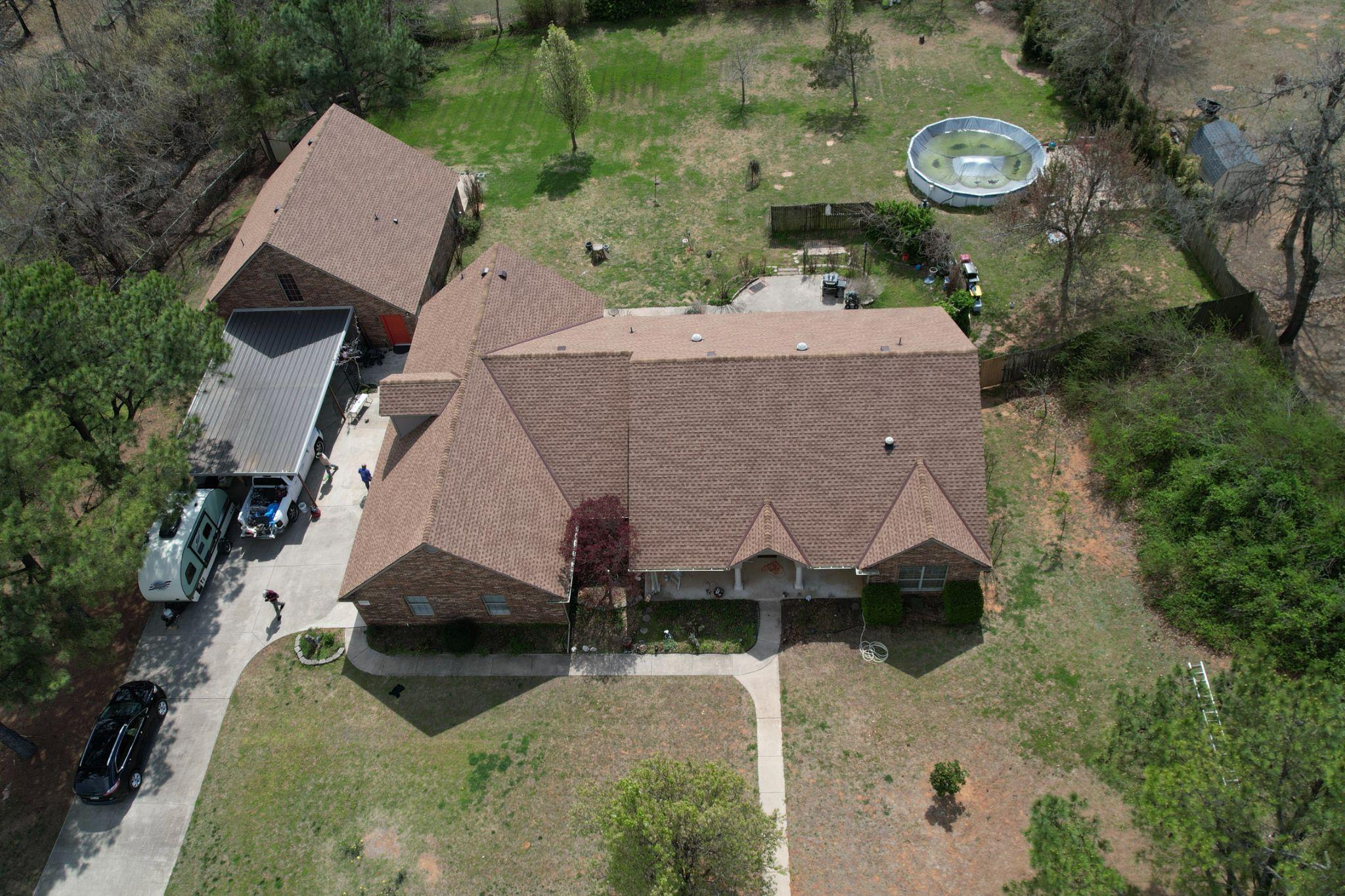Not all roofs are created equal—especially when it comes to wind resistance. Here’s what to look for: 1. High Wind-Rated Shingles.
Modern asphalt shingles come with wind ratings from 60 to 130+ mph.
Look for:
- Class F or H wind rating (ASTM D3161)
- Impact-rated shingles for hail resistance
- Manufacturer warranties specific to high wind zones
Architectural or dimensional shingles typically outperform standard 3-tab options in both strength and wind resistance.
2. Proper Nailing Techniques
Your shingles are only as good as the nails holding them down.
Make sure your roofer uses:
- 6 nails per shingle (standard in high wind zones)
- Roofing nails, not staples
- Nails driven into the nail line, flush—not overdriven or underdriven
Improper nailing is one of the most common causes of storm-related roof failure.
3. Starter Strips & Sealing
Starter shingles and adhesive strips help lock the first row of shingles down tight. This protects the eaves and edges—prime zones for wind uplift.
Also important:
- Proper sealant strips
- Ice and water shields in valleys and vulnerable areas
- Reinforced ridge caps
4. Roof Decking & Underlayment Matter Too
In severe storms, some roofs fail beneath the shingles. You’ll want:
- 5/8″ plywood decking (or upgraded OSB)
- Synthetic underlayment that resists wind-driven rain
- Reinforced fasteners at rafter tie-downs for extra wind shear resistance
Ask your contractor about local wind codes and how they build beyond minimum standards.
Why This Matters in Texas & Oklahoma
In regions like:
- Fort Worth / Denton / Plano
- Oklahoma City / Norman / Moore …you’re no stranger to:
- Spring hail + windstorms
- Summer microbursts
- Tornado alley gusts
A standard roof might not cut it. Wind-resistant roofing can:
- Prevent storm damage and water leaks
- Keep your insurance premiums lower
- Protect your home’s structure and value
Bonus: Questions to Ask Your Roofer
- “What’s the wind rating of the shingles you’re installing?”
- “Do you follow local wind codes and manufacturer install specs?”
- “Do you use starter strips and upgraded underlayment?”
- “Can you provide references from other storm-prone installs?”
A roofer who knows wind damage prevention is worth their weight in shingles.
Final Thoughts
If you live in a high-wind zone like DFW or Central Oklahoma, your roofing system needs to be more than average. The right materials, installation practices, and maintenance can be the difference between a minor repair and a full replacement after the next big storm.
Don’t gamble on gusts. Roof smart, roof strong.


